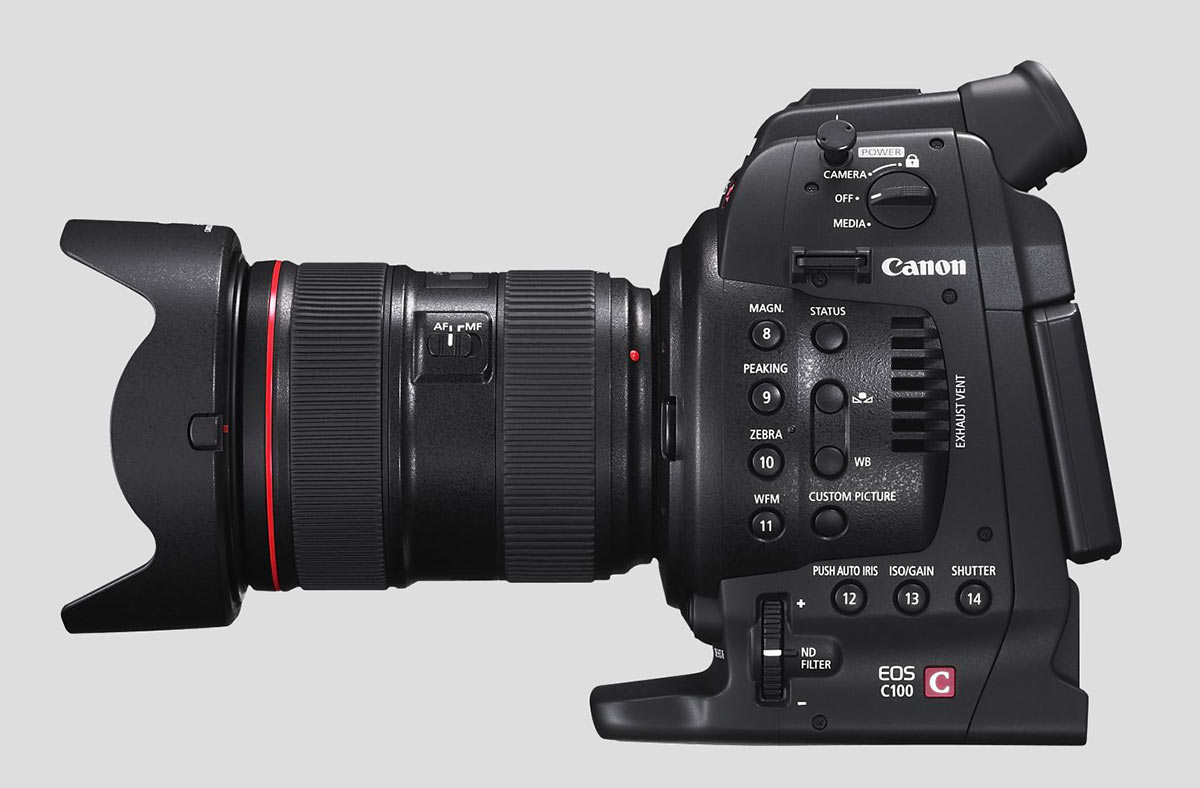News
Canon C100, the new Cinema EOS line camera
As you may already know, Canon recently added to its CINEMA EOS lineup the new EOS C100, located at the opposite end of the spectrum from the also recent EOS C500 4K. While the C500 is capable of capturing 4K with uncompressed raw output, the C100 has rather more limited features (records up to 1920 x 1080) which directs it towards more economical productions such as journalism or documentary. According to Canon, it is designed for those who need to get the most out of HD and lens diversity.
It shares certain features with the C300, including the 8.3MP Super 35mm CMOS sensor, but its design is 15% smaller and lighter. Among its physical qualities we can find a 3.5-inch vari-angle LCD screen located on the back of the camera; and 15 customizable buttons.
 Its capture codec is AVCHD (at 24 Mbps), which uses MPEG-4 AVC or H.264, in 4:2:0, at 8-bit. Another option is to use the HDMI output for uncompressed recording, which will also have embedded timecodes. One of the devices that can achieve this function is the Ninja-2. During IBC it has been announced that this Atomos field recorder will be able to connect to the C100 via HDMI, as both companies (Atomos and Canon) have been working together to do so.
Its capture codec is AVCHD (at 24 Mbps), which uses MPEG-4 AVC or H.264, in 4:2:0, at 8-bit. Another option is to use the HDMI output for uncompressed recording, which will also have embedded timecodes. One of the devices that can achieve this function is the Ninja-2. During IBC it has been announced that this Atomos field recorder will be able to connect to the C100 via HDMI, as both companies (Atomos and Canon) have been working together to do so.
However, this model has clear disadvantages, and we will miss features such as HD-SDI connections, GenLock or timecode input and output. Also the PL mounts, as it is only compatible with the EF range of lenses (just like the C300).
Images can be stored on two SD cards (simultaneously or uninterrupted between them), at 24, 25 and 30p, at 50 and 60i. There is no mode for slow motion, which is strange considering that one of its main competitors will be the Sony FS700, which has several modes for high-speed recording capable of up to 240fps in HD.
Other technical features include:
 – DIGIC DV III processor.
– DIGIC DV III processor.
– ISO from 320 to 20,000, with a new wide dynamic range parameter.
– Canon Log Gamma available.
– 3 ND filters (2, 4 and 6 stops).
– Automatic modes for exposure and focus: One Shot AF, which automatically checks the focus in the central part of the image before recording. Push Auto Iris analyzes the exposure and adjusts it (also before recording) and an automatic white balance does the same for color temperature.
– Built-in stereo microphone, plus two XLR inputs.
The Canon EOS C100 will be available starting in November, one month after its C500 companion ($30,000); filling the gap between DSLRs and the C300 for a price of $7,999.
If you want more information about the EOS C100 you can read this very complete article from Julio Gómez’s blog.
In this video, cinematographer Sebastien Devaud shot these images as a demonstration of the Canon EOS C100, using 12 EF lenses and recording on SD cards in AVCHD.

